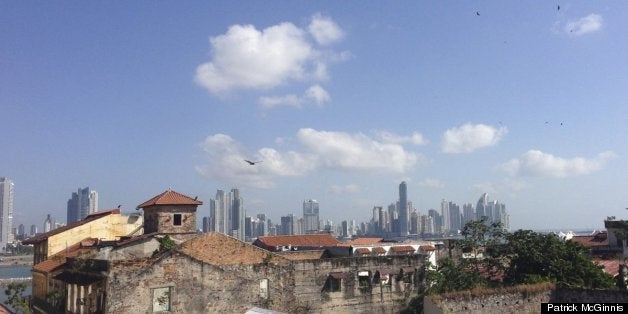
Don't be surprised if you end up in Panama soon. Given the tremendous expansion of the national flag carrier, Copa Airlines, Panama City has become a critical transit hub for flying between the United States and South America. Earlier this year, after booking my fourth stop over in Panama's Tocumen International Airport in just three months, I decided that it was time to see more than just the airport and scheduled a 3-day layover.
On the advice of a Panamanian friend, I decided to book myself into a hotel in the Casco Viejo, also known as San Felipe or the Casco Antiguo. The Casco Viejo is the Old City of Panama and it is the city's heart and soul. It is the place where Panama was born and its construction, undertaken in the late 1600's, reflects the classical Spanish style. The architecture, especially the main plaza, is reminiscent of the Old Towns of cities like Lima or Quito. Additionally, the Casco Viejo was built as a fortified city, much like Cartagena, Colombia.
Thanks to the Panama Canal, over the last century, Panama developed as a major international trade hub. As the city became known for the skyscrapers that dominate its skyline, the Casco Viejo fell into a decadent state. The neighborhood was also heavily damaged during the US incursion into Panama in 1989. Over the past decade, however, private development firms have lovingly restored the area. Now, with a fresh coat of paint and its designation as a UNESCO World Heritage Site, the Casco Viajo is preparing to welcome a new generation of residents and visitors.
When I visited in January 2013, the neighborhood was buzzing with construction. Workers were resurfacing the narrow roads with brick pavers, and people in hardhats (ironically the word for helmet in Spanish is "casco") outnumbered tourists. While there is plenty of construction, the neighborhood has once again become a leisure destination. Thanks to new boutique hotels such as the Tantalo Hotel with its hyperactive roof bar, the neighborhood is increasingly known for its restaurant and nightlife scene. During the day, visitors can spend hours wandering the streets, visit the excellent Panama Canal Museum, or grab coffee at one of a growing number of quality coffee shops. The only time I felt tempted to leave the Casco Viejo (other than to visit the Canal itself) was to wander over to the modern part of the city to try the home-style Panamanian cuisine at Barandas Restaurant in the Hotel Bristol. I'd seen the lifestyle guides and cookbooks written by Chef Cuquita Arias de Calvo all over town, and the food and homestyle atmosphere lived up to their promise.
Although the Casco Viejo remains a city in transition, it is well worth a visit, whether its during a layover or during a trip to Panama itself. In addition to culture and history, there is the draw of the Panamanian people themselves, who are more than happy to host the growing throngs of tourists. When I left the Tantalo, the bell hop gave me a hug and made me promise to return. It's not everyday that one experiences that kind of hospitality, but it appears that the Casco Viejo is just that kind of place.
